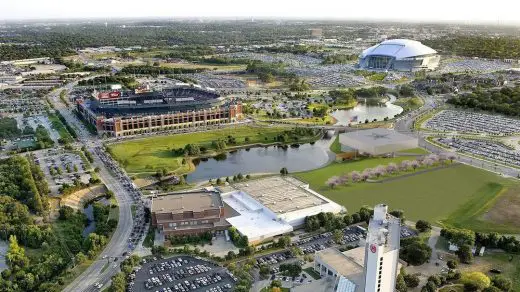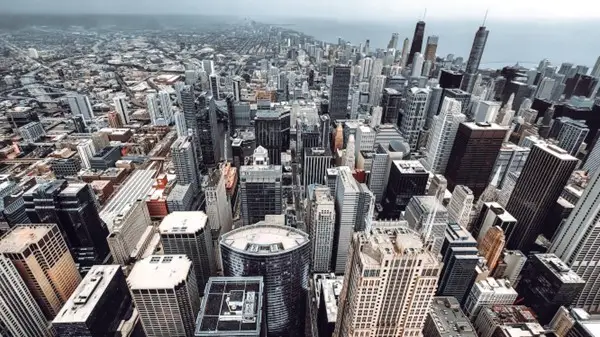Why are all American cities based on the Grid System guide, USA city design advice, United States urban masterplans
Why Are All American Cities Based on the Grid System?
post updated February 16, 2024
Why the grid system is such an important element of city design in the US
When you assess maps of the vast majority of cities in the United States, especially ones that are densely populated, you will notice how they are based on the grid system. You can see how all the streets are aligned to ensure there are unique blocks everywhere.
This style of development has a happy, probably unintended, side effect – fun block parties in New Jersey and New York, to mention just two of many places where these events are held.
The question that many people ask is why such a system is so standard. Are there benefits to the grid system that you would not get with other urban designs? Or are architects and engineers simply looking for the easiest way to set up a city without creating too many problems?
Below is an explanation of why so many American cities are based on the grid system and the benefits it offers.
August 24, 2022
Democratic Land Division
There is a misconception that the grid system may have originated in modern-day Europe or the United States, but that is not the case. Using grids to design cities dates back to the time of the ancient Greeks.
The grid was seen as the best way to distribute land and its resources equally, especially when people lived in such proximity and relied on each other for goods and services.
Such a concept appears to have continued over the centuries; it does make life a lot easier for city planners. Take a city such as New York City, for example. Due to its grid system, there are far fewer disputes regarding street front and boundaries. Real estate regularization is also a lot easier when designing a city using the grid system.
Urban Infrastructure
The infrastructure in, around, and underneath a city is what keeps it going on a daily basis. The grid layout ensures that providing the necessary services to all city residents is straightforward while performing maintenance and repairs is also seamless.
Even dating back to the ancient civilization of Harappa and Mohenjo-Daro, they used a grid system to ensure that hygiene and waste services were provided to citizens in the best possible way.
Any other system would make it a lot more complex and expensive to ensure that everyone in the city has access to the amenities and comforts they are paying for.
Pedestrian Movement
Even though most cities in the United States are very car-oriented, there are downtowns around the country where pedestrians can walk and use public transit to get from one place to another.
Having the grid system as the basis for city design makes it a lot easier to ensure that cars and pedestrians can co-exist. Crossing roads create frequent intersections, so avoiding accidents is a lot easier using this system than it would be with any alternative.
If anything, many urban planning experts believe that American cities should be better oriented towards walking, cycling, and the use of public transit. The problem for many urban areas in the U.S. is not the layout of their downtowns, but the sprawling nature of suburbs, which necessitates using a vehicle to get around in a timely manner.
Human Psychology
Did you know that when people are entering an intersection on foot or in their car, they are very unlikely to check over their shoulder at acute angles to see if there is traffic flow or a pedestrian approaching?
Such an issue is easily mitigated through the grid system, where intersections only happen at right angles. If the intersections were designed differently, far too many accidents would occur as drivers or pedestrians did not correctly assess oncoming traffic.
Easy to Find Your Way
Have you ever gotten lost in a very big city where you have never been before? The feeling of being in an unknown place can be liberating if you are on vacation, but it can be frustrating and anxiety-inducing if you are running errands or have to be somewhere for work.
Having a grid layout for a city makes it a lot easier for everyone to get around without constantly needing to look at a map or ask someone for directions. Even though we can now look at our phones for directions in real-time, that was not always the case.
Comments on this guide to Why Are All American Cities Based on the Grid System article are welcome.
American Buildings
American Architecture Designs
National Medal of Honor Museum, Arlington, Texas
Architecture: Rafael Viñoly Architects

image courtesy of architects
Tippet Rise Art Center in Fishtail, Montana
Architects: Cushing Terrell

photo © Karl Neumann
DRIFT, Dallas, Texas sculpture by Gerry Judah, USA
Design: sculpture by Gerry Judah
Blackstone Heritage Corridor Visitor Center, Worcester, MA
Design: designLAB architects
Home Articles
Residential Architecture
Comments / photos for the Why Are All American Cities Based on the Grid System Guide– United States of America urban masterplans page welcome








